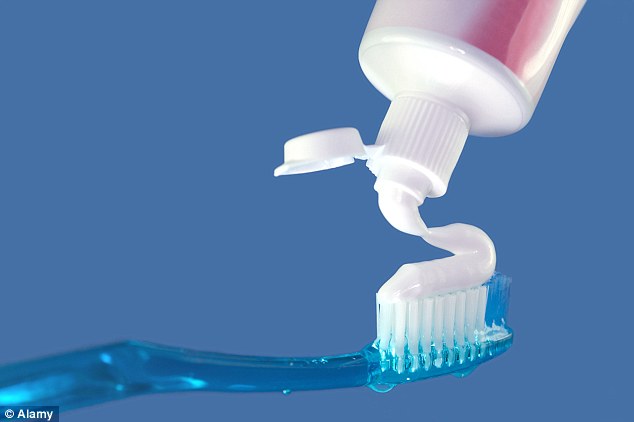Could your toothpaste be harming your health? Although you only use a very small amount of toothpaste every day, some experts are now concerned that, over a lifetime, some of the ingredients used in big brand toothpastes could indeed be harmful.
There are alternatives to the big brand toothpastes that we all tend to use out of habit. You can buy chemical free, organic toothpaste, or you could make your own at home. Brushing teeth is important, but some of the ingredients in the well-known toothpastes are quite possibly something that you wouldn’t normally want to put in your mouth. Checking the ingredients in toothpaste, though, is not something that most of us would even think of doing. Read on, though, and you might be surprised at some of these scary ingredients that could be hiding in your toothpaste.
1. Sodium Lauryl Sulphate (SLS)
Sodium Lauryl Sulphate (SLS) is a surfactant that is used in toothpaste to make it foam. The problem with this ingredient is that it can actually change the way that your taste buds perform their job and that’s why things seem to taste bitter after you have brushed your teeth. More importantly, SLS has also been linked to the development of canker sores and irritation of the skin.
2. Triclosan
Triclosan is an antibacterial agent found in some of the popular toothpastes that are said to fight gingivitis and plaque. The problem with Triclosan is that it has been suggested that the chemical may be partly responsible for the ever growing problem of antibiotic resistance. It has also been identified as a potential endocrine disrupter, which could cause all manner of different health problems.
3. Hydrated Silica
Hydrated silica is an abrasive that is used in whitening toothpastes. It’s actually made from a crystallised compound that is found in sand. While it does a great job of lifting stains from your teeth, it also does a pretty good job at lifting of the tooth enamel too! Over time, scratching at the tooth enamel with hydrated silica could cause irreparable damage to your teeth.
4. Fluoride
For a long time, fluoride has been touted as the solution to tooth decay, but more recently, doubts have been cast on its effectiveness. Over time, fluoride can build up in the body and can cause endocrine and neurological dysfunction. Scientists are now suggesting that fluoride might not even be an effective way of preventing cavities after all and some are recommending that people don’t use fluoride toothpaste at all.
5. Sorbitol
Sorbitol is used in some brands of toothpaste, because it helps to prevent the growth of the bacteria that are the cause of plaque. If you swallow too much of toothpaste that contains sorbitol, you could develop stomach problems. Even small amounts have been known to aggravate irritable bowel syndrome and cause severe abdominal pain.
6. Propylene Glycol
Propylene Glycol is a surfactant that is used in quite a lot of cosmetic and personal care products, but there has been surprisingly little research done on its suitability for use in toothpaste. What is known about the chemical is that it can cause irritation to the skin and the eyes, and it may even be responsible for organ system toxicity.
7. Microbeads
Microbeads are tiny balls of plastic that are used as an abrasive in exfoliating scrubs and in some toothpaste. As well the damage they cause to the environment, because they aren’t biodegradable, it has also been found that microbeads can get trapped under the gums, which allows bacteria to get in and cause gum disease.
8. Hydrogen peroxide
Here is some more bad news if you use whitening toothpaste. The peroxides and hydrogen peroxide used in many whitening toothpastes to bleach teeth can also cause harm the mucus membranes in your mouth and damage your gums. What’s more, the levels of peroxides in a lot of brands of toothpaste aren’t even enough to effectively bleach your teeth anyway.
9. Diethanolamine (DEA)
Diethanolamine (DEA), which is a foaming agent, is known to be a hormone disrupter and it is also listed by the California Environmental Protection Agency as a potential human carcinogen. DEA reacts with other compounds to form a carcinogen that is readily absorbed by the skin and it has been linked with cancer of the liver, bladder and of the stomach.
10. PVM/MA Copolymer
PVM/MA Copolymer is added to toothpaste to make antibacterial ingredients stick to the teeth and the mouth so that they have a longer lasting effect. The problem with PVM/MA Copolymer, though, it that it is known to be irritating to the eyes and it can cause damage to the mucus membrane’s in the mouth.
Do you know other scary toothpaste ingredients?
Stay happy and healthy!







